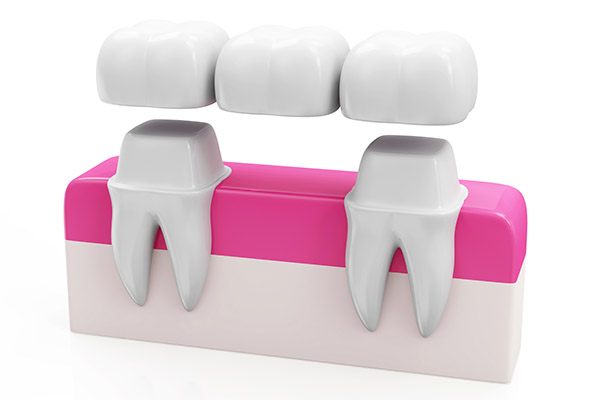How a Root Canal Can Save Your Tooth

Finding out that you need a root canal can be terrifying. This procedure has always been seen in a negative way. In truth, this treatment can restore your dental health. Here are the details on how a root canal can prevent tooth loss.
This procedure can save one’s tooth
The dentist will remove the inflamed or infected pulp material from its chamber. Cleaning the root canal and pulp chamber will follow. Disinfecting and cleaning the area will come next before filling the chamber with gutta-percha. This material will seal the tooth. It will keep away bacteria and food particles. Placing a custom crown over the treated tooth will protect the tooth from future infection or damage.
Without a root canal, the pulp infection will spread to other teeth and seep into the bloodstream. This can be dangerous to one’s general health. The dentist may need to extract the tooth when the infection worsens. But with a root canal, the dentist can restore the tooth and lower the risk of infection. The results can last for many years with proper care and maintenance.
Symptoms one needs a root canal
Dental infection may develop quietly for years. A dental checkup can determine which tooth is at risk of developing a serious infection. There are also symptoms to watch out for. Knowing them can help one get a root canal treatment right away. Here are some of them:
- Tooth loosening happens when the pus from the infected pulp softens the jawbone that supports the tooth. A deteriorating jawbone weakens the tooth’s foundation, which results in tooth loosening.
- Lingering dental pain is also a symptom to watch out for. The deep pain can also spread to the jaw, other teeth, or the face. This means that there is a tooth infection.
- A swollen jaw may result from the pus in the tooth that cannot drain out.
- The tooth can also be tender to the touch. This shows that there are damaged nerves around the pulp.
- Gum swelling and tenderness can also result from a tooth infection.
- A pimple-like growth on the gums near the infected tooth can appear. This pimple tends to ooze out and release foul pus.
- Discoloration can also happen to the affected tooth. The tooth will become darker in color.
The process
Before the root canal, the dentist will order dental X-rays of the tooth. Gentle tapping or touching with a hot or cold substance can help check for pain or sensitivity. An EPT or electric pulp test uses a device that delivers an increasing current through the tooth. The dentist will see if the pulp will react. The dentist will ask if the tooth hurts when the patient bites down on it. Checking for bone or gum swelling around the tooth is also a way to see if it is infected.
The dentist will numb the area first. Placing a dental dam around the tooth will keep the tooth dry during the treatment. Creating an opening on the top of the tooth will provide access to the pulp. The dentist will remove the infected pulp using tiny dental tools. This means that the dentist will take out the tissues, blood vessels, and nerves from the pulp chamber.
Cleaning, disinfecting, and drying the pulp chamber will come next. Filling it with gutta-percha will stabilize the tooth. A temporary filling will seal the treated tooth. There will be a custom dental crown that will restore the tooth’s appearance and bite strength. This restoration will protect the tooth from food particles and bacteria.
After the root canal treatment
The patient may rest for a while before going home. Some patients prefer to rest at home. Others choose to continue with their regular activities. The patient needs to see the dentist for the custom crown fitting and placement. See the dentist if the tooth hurts for at least a week. Here are some tips on caring for the treated tooth:
- Brush after each meal and floss once a day. Be gentle in brushing the treated tooth.
- Eat soft foods, such as yogurt, mashed potatoes, and pasta. Doing so can relieve the pressure off the treated tooth.
- Use an antibacterial mouthwash. This will rinse away the germs.
- Refrain from chewing on the treated tooth. That way, the tooth can rest.
- Avoid smoking and drinking alcohol. These habits can slow down the healing process.
A root canal can help keep your natural teeth intact
Dental damage can reach the pulp. This can be a painful situation. Your dentist will assess your affected tooth and suggest a root canal. This procedure can restore, protect, and strengthen your tooth. Working with your dentist will ensure that you keep your natural teeth for as long as possible.
Request an appointment here: https://smilewellsouthbay.com or call SmileWell Family Dentistry at (310) 904-6375 for an appointment in our Torrance office.
Check out what others are saying about our dental services on Yelp: Root Canal Treatment in Torrance, CA.
Recent Posts
A root canal is a procedure that can both relieve pain and prevent tooth loss, and nowadays, root canals are a common and painless procedure. If your tooth becomes injured or infected, bacteria can build up the inside of the tooth where the pulp and nerves reside. Left untreated, pain and sensitivity may become severe,…
Having a root canal treatment is a method of tooth restoration capable of retaining the natural tooth structures. Much of the enamel, dentin, and roots are still intact during this procedure. The aim of this treatment is to remove the infected pulp and the bacteria in the pulp chamber. This procedure has a reputation of…
When it comes to preventive dental care, the approach is two-fold. First, it involves going to the dentist for regular checkups and performing any recommended follow-up treatment. Second, good oral health habits are crucial for keeping the body in good working order. For people living with chronic conditions such as diabetes and osteoporosis, keeping up…
A tooth abscess is a dental emergency because it has a risk of the infection expanding to other parts of the body. If an abscess spreads to the brain, it can have life-threatening effects.Abscesses can be incredibly painful, and the pain is often accompanied by swelling. The severity of the pain and swelling is often…


